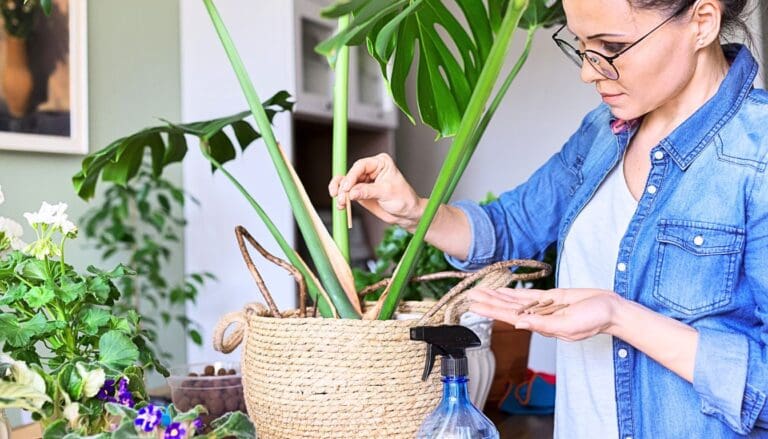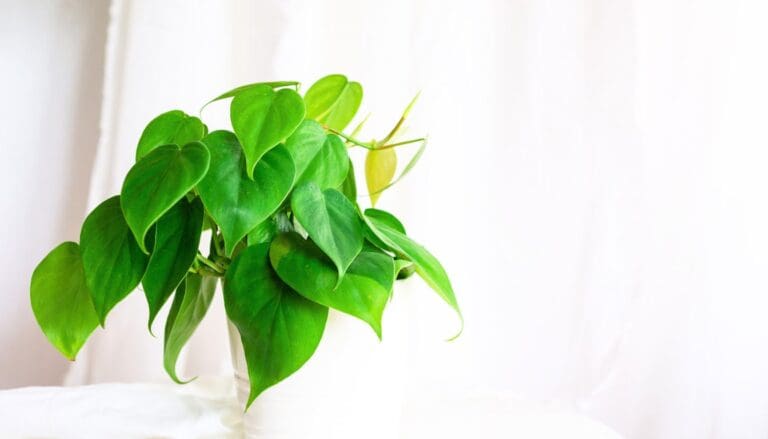Root Rot In Philodendron? Signs, Causes & How To Fix!
Philodendron is an easy-to-grow houseplant that thrives and grows fast if you properly care. These plants can adjust to different conditions, but root rot is one issue your philodendron can face due to lack of care or too much care.
Root rot is not unusual and is more likely to happen with humidity-loving plants such as philodendrons. It can kill your plant as it does significant damage to the roots. But what causes root rot in philodendron and how can you identify the same?
The primary cause of root rot in philodendron is overwatering. Other reasons include a poor drainage system, heavy soil mix, over-fertilization, or fungal infections. Common signs of root rot include stunted growth, droopy leaves, yellow or brown spots on leaves, and soft brown roots.
If your philodendron has root rot, the plant will show signs through its leaves and soil. But if you keep ignoring those signs, the conditions will get severe, and your philodendron can even die from root rot.
But once you identify the problem, you can cure it and get it fixed.
This article will discuss all the reasons that can lead to root rot in your philodendron and their solutions.
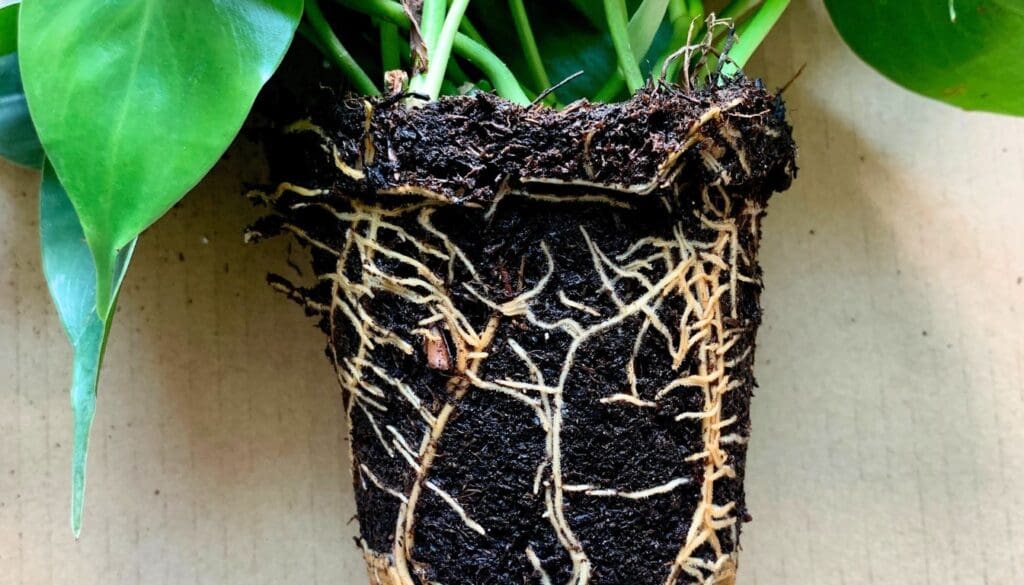
Please note: Simplify Plants is reader-supported. Some links in the post are affiliate links and I get a commission from purchases made through links in the post.
What causes root rot in philodendron?
There can be various reasons behind root rot. Some of those are:
- Overwatering
- Poor drainage system
- Heavy soil mix
- Over-fertilization
- Non-porous pot
- Poor ventilation
- Pathogenic infections
- Stress
- Buying a sick plant
- Dormant season
- Inappropriate temperature
Let’s discuss these issues in detail.
Overwatering
When plant lovers make the mistake of watering their plants frequently out of concern or care, the plants get overwatered.
Philodendrons are tropical plants that need water to keep the soil slightly moist, but that doesn’t mean that the soil should stay wet.
Watering the philodendron more than its requirement will make the roots suffocate by blocking the oxygen flow to the roots.
Therefore, if you overwater the philodendron a few times, the plant will get stressed, and the roots will decay.
Also read: How Much Water Does A Philodendron Need? (Water Requirement+How Often)
Poor drainage system
If you water your philodendron correctly, but the plant is still overwatered, you need to check the drainage system.
A sound drainage system means a pot with working drainage holes. However, if the drainage holes are blocked, the water will take longer to flow out of the holes. This will keep the soil wet for long and cause overwatering if the plant is not repotted soon.
A poor drainage system can also cause fungal or bacterial infections.
Heavy soil mix

One more factor that contributes to overwatering, even when you are watering correctly, is heavy soil mix.
Using a heavy soil mix will hold the water for a long and will not let it pass out fast. This will keep the roots wet for an extended period, and they won’t breathe properly.
If you don’t fix this problem, the roots will develop root rot, and there will be bacterial or fungal growth in the soil.
Also read: What Type Of Soil Does A Philodendron Need? (Best Soil Mix)
Over-fertilization
Philodendrons get over-fertilized when they are fertilized too frequently or given a strong dose of fertilizer.
Many philodendron owners think that fertilizing their plants more often will result in more growth, but that is a misconception. Fertilizing more often causes stress to the plant.
Over-fertilizing leads to excess salt build-up on the soil that makes the plant leggy and causes many other diseases, such as root rot.
Also read: What Kind Of Fertilizer For Philodendron? (Best Fertilizer+Fertilizer Ratio)
Non-porous pot
You should avoid using non-porous pots that are made of materials such as plastic. These containers hold a lot of water and make the soil soggy.
You must use pots made of clay or terracotta. These allow air and water to flow freely inside the pot.
Porous pots will absorb the excess moisture instead of keeping the soil wet.
Poor ventilation
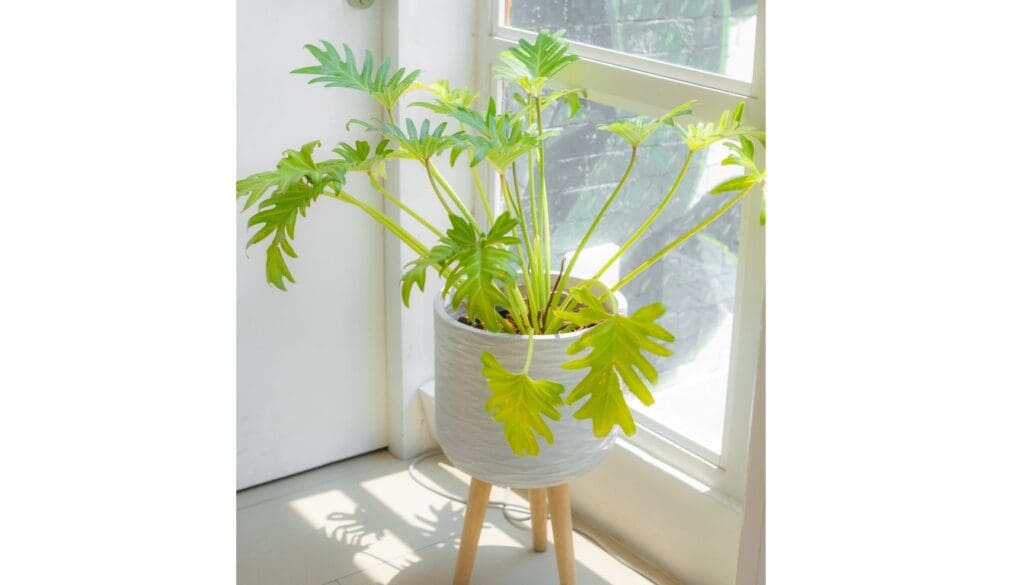
Ventilation is an essential factor as it helps the plant to remain healthy. Although many plant owners don’t give much importance to this, it is a crucial factor.
Good airflow allows the philodendron to remain healthy by allowing water to evaporate from the soil.
If the ventilation is poor, it will restrict airflow, and the soil will remain soggy, leading to root rot.
Grouping the philodendron with other plants is a good way of maintaining good air circulation.
Pathogenic infections
Various pathogens can attack your philodendron and make it difficult for the plant to survive. These pathogens attack the roots and cause different types of root rot.
Pythium rot infects the roots of your philodendron and causes the leaves to turn yellow or brown. This infection can occur if you have planted your philodendron in contaminated soil.
Rhizoctonia blight infects your philodendron due to contaminated soil mix or damaged cutting of the philodendron. This infection occurs through the production of Rhizoctonia spores in the soil. You will notice that the leaves have dark spots and grow in irregular shapes.
Phytophthora rot is the most common rot that is caused by imported cuttings. This infection is caused due to contaminated water or overhead irrigation. The infection starts from the roots and slowly spreads to other plant parts. You will notice that the leaves will turn brown or black.
Stress
If your philodendron is stressed for any reason, such as overwatering, inappropriate lighting, or over-fertilization, it becomes an easy target for bacteria and fungus attacks.
Inspect your philodendron regularly to ensure the roots and soil are doing well. Take care of the philodendron properly to ensure the plant is not overwatered or over-fertilized.
Buying a sick plant
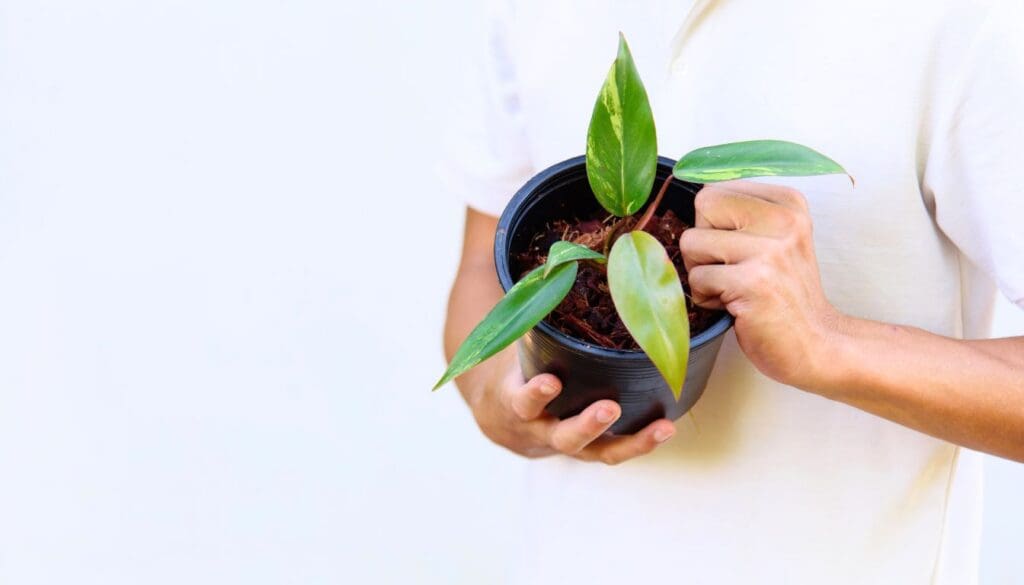
You need to be vigilant while buying a philodendron, as you might buy a sick plant if you are not careful.
When buying a young plant, you will not see signs of root rot during the early stages, so you should buy a healthy plant without wilted or discolored leaves.
After getting a new plant, isolate it from other houseplants. Give it a few days, and once you are sure that your philodendron is healthy, you can move it with other plants in the house.
Dormant season
Dormant season requires a different care routine for your philodendrons. The plants need less of everything during this time.
The temperature levels fall during this time, which results in slow growth in plants. The plants like to rest during this time.
If you don’t alter your care routine during this time and keep giving the plant the same amount of water or fertilizer, you will soon have an overwatered or over-fertilized philodendron.
The roots will become sensitive due to excess water or fertilizer, and there will be root rot.
Inappropriate temperature
Philodendrons come from tropical regions where they are exposed to warm temperatures. Philodendrons can tolerate low temperatures for a while but not for long.
However, if the philodendron is exposed to low temperatures and you have not reduced the watering, it will get overwatered and develop root rot.
Signs of root rot in philodendron

Some signs of root rot in philodendron include:
Soft and brown roots: These are difficult to identify as they grow below the soil’s surface. The roots turn soft and brown only when there is root rot.
When you start getting a foul smell from the soil, you need to check the roots of your philodendron. The roots seem weak and break even when you pull them slightly if the philodendron has root rot.
Yellow leaves: A common sign of root rot is yellow leaves. Whenever something is wrong with the plant, the leaves change color and turn yellow.
Wilting and drooping leaves also indicate that the roots are damaged and the plant is not getting enough nutrients through the roots.
Foul odor from roots: Healthy roots don’t have any significant smell or have an earthy smell. But if there is root rot, the soil starts smelling unusual and foul.
Slow growth: When the roots cannot support the plant due to root rot, the philodendron starts showing slow growth.
The leaves grow small in size, and the stems grow thin and short as the roots fail to absorb water and nutrients.
How to fix root rot in philodendrons?
You need to evaluate the severity of the root rot and then find a way of fixing it.
Mild root rot
If the soil takes very long to dry out and you don’t get any smell from the soil, there is mild root rot.
This is the best time for pathogens and fungi to attack your philodendron, so you should start the treatment immediately.
First, you need to cut down on watering and let the soil get dry.
You can even take the philodendron out of its container, spread the soil on a newspaper, and let the soil and roots dry out a little bit.
After the soil and roots are dry, put them back in the pot. Let the soil dry between the watering and water only when the soil is 75-80% dry.
Severe root rot
If the root rot is severe, but the philodendron still has some healthy roots, you can save the plant by repotting it.
You should be careful while repotting the plant as you don’t want to damage it. Let’s look at the steps with which you can repot your philodendron.
- Take the philodendron out of its pot gently. Hold the stem’s base and pull the plant out of the pot. Make sure to dispose of the soil, as you won’t be using that soil again.
- Prune the damaged leaves and stems to reduce the pressure on the roots.
- Wash the roots by placing them under tap water and clean as much soil as possible.
- Check the roots thoroughly and prune those that look brown, soft, and mushy.
- You can keep the roots in a mix of fungicides diluted with water for an hour to eliminate bacteria and fungi.
- Let the roots remain outside in the air for a day. This will also kill leftover bacteria found in roots.
- Prepare well-draining soil mix by taking peat-based soil and adding perlite to it. Consider adding some fungicide to it to prevent fungal or bacterial growth.
- Get a container that is two inches bigger than the roots. Make sure that it has drainage holes. Add some small stones at the bottom of the pot to prevent the blockage of the drainage holes.
- Plant your philodendron in the fresh soil mix and ensure there is no air pockets in the soil.
- You should select porous pots such as ceramic or terracotta pots that will support good ventilation and absorb excess water from the soil.
If the condition is even worse and repotting will not help, it is best to dispose of the plant as you won’t be able to revive it.
Don’t forget to sanitize the pruners or any other equipment that you have used to prevent any infection.
Tips to keep your philodendron thriving

Philodendrons require little care and attention, and they will thrive and grow very fast.
You should never overdo anything, as an excess of anything doesn’t do any good for the plant. So, you should provide the required amount of care and attention and nothing more than that.
Light:
- Keep the philodendron away from direct sunlight.
- Provide 6-8 hours of indirect light.
- You can use curtains to protect the philodendron from direct sun by filtering the light.
- Use artificial lights in case of low light conditions.
Water:
- Water the philodendron when the top 2-3 soil layers are dry.
- Never water without checking the soil’s moistness.
- Ensure the water runs out of the pot through the drainage holes.
Fertilizer:
- Try to opt for organic fertilizer, as it won’t harm your philodendron.
- Fertilize the philodendron once a month during the summer and spring seasons.
- Reduce fertilizing in the fall and stop it entirely in winter.
- Dilute the prescribed dose mentioned at the back of the fertilizer bottle and then give it to your philodendron to avoid over-fertilizing.
Humidity and temperature:
- Maintain humidity levels above 50% at least. Philodendrons enjoy high humidity levels, so try to increase the humidity inside the house.
- Use a humidifier for your philodendron. You can mist it sometimes or group it with other plants to increase the humidity.
- Philodendrons prefer warm temperatures, so try to maintain high-temperature levels inside the house, especially during winter.
- You can place the philodendron near a furnace or fireplace to increase the temperature but try to keep it a few feet away so that the leaves don’t get burnt.
- Prune the philodendron occasionally to keep it in shape and to stop its overgrowth.
Ref: Wikipedia.
Recommended Garden Supplies
| Product Image | Our Recommended Gardening Supplies | Check Offers! |
|---|---|---|
Top Top
Top
Top
Top
Top
Top
Top
Top | rePotme Houseplant and Tropical Classic Potting Soil Mix | Check Offer On Amazon |
 Top
Top
Top
Top
Top
Top
Top
Top | Espoma Organic Indoor Plant Food | Check Offer On Amazon |
 Top
Top
Top
Top
Top
Top
Top
Top | GooingTop LED Grow Light 6000K Full Spectrum Clip Plant Growing Lamp | Check Offer On Amazon |
 Top
Top
Top
Top
Top
Top
Top
Top | Soil Moisture Meter | Check Offer On Amazon |
 Top
Top
Top
Top
Top
Top
Top
Top | Govee Hygrometer Thermometer, Bluetooth Enabled! | Check Offer On Amazon |
 Top
Top | LEVOIT Humidifiers for Large Room(Best For Plants) | Check Offer On Amazon |
 Top
Top
Top
Top
Top
Top
Top
Top | Upgraded DIY Automatic Drip Irrigation Kit, 15 Potted Houseplants Support | Check Offer On Amazon |
 Top
Top
Top
Top
Top
Top
Top
Top | Stainless Steel Heavy Duty Gardening Tool Set | Check Offer On Amazon |
 Top
Top
Top
Top
Top
Top
Top
Top | Bonide Insecticidal Soap | Check Offer On Amazon |
 Top
Top
Top
Top
Top
Top
Top
Top | Bonide 32 oz Spray Neem Oil for Organic Gardening | Check Offer On Amazon |
 Top
Top
Top
Top
Top
Top
Top
Top | Garden Safe Fungicide | Check Offer On Amazon |





